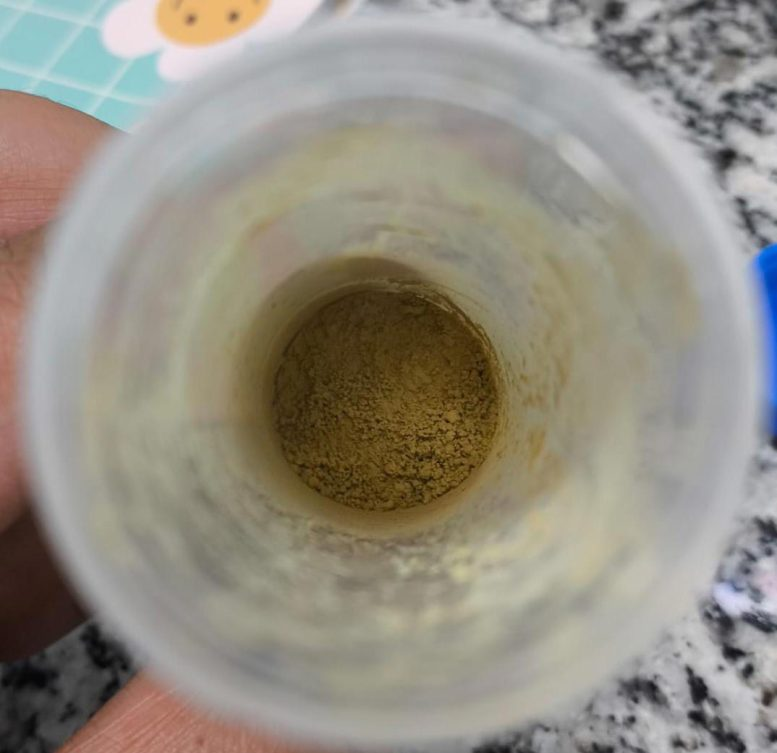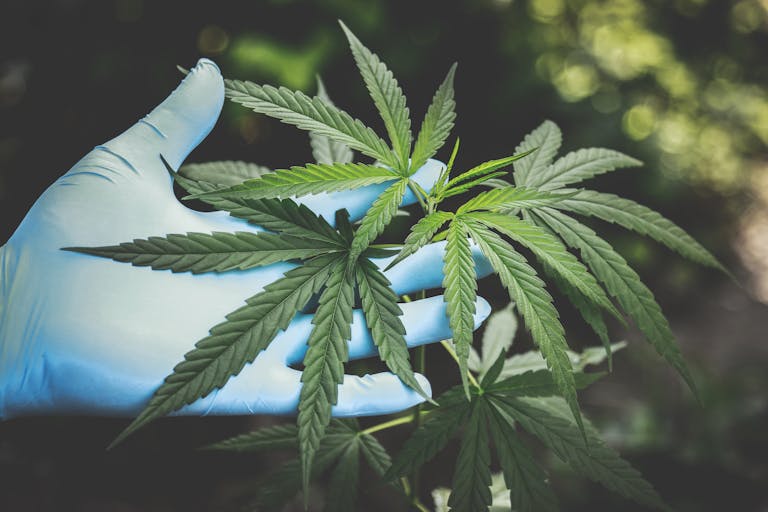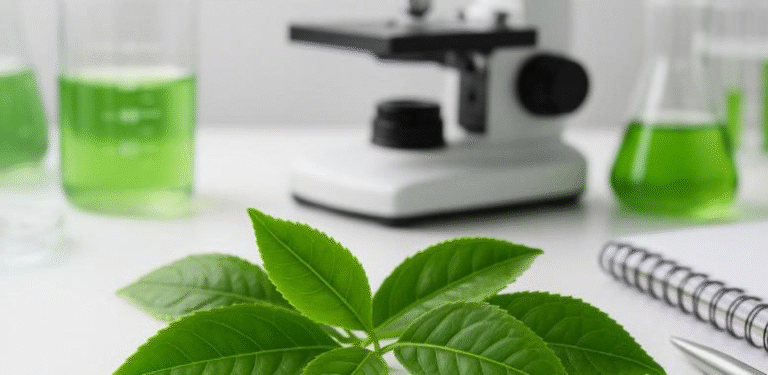Natural Compound Morin Shows Promise for Treating Gum Disease

A new study from researchers in Brazil and the UK has revealed that a natural compound called morin could become an effective tool in the fight against gum disease. Morin is a flavonoid found in guava leaves, apple and fig peels, almonds, and certain teas.
Scientists have long been interested in natural plant-derived compounds for oral care, but this latest research takes the idea a step further by creating a controlled-release powder that mimics powdered milk. The goal is to develop practical oral care products that can help prevent and manage periodontal disease without the side effects often associated with conventional treatments.
What the Researchers Developed
The team at the Araraquara School of Dentistry at São Paulo State University (FOAr-UNESP) processed morin into a fine powder using spray drying, the same technique used in producing powdered milk. This powder can be used as a base for oral hygiene products such as rinses, tablets, or other formulations.
One of the main advantages of this approach is that the powder can be especially beneficial for people who struggle with daily oral hygiene routines, such as older adults and patients with reduced motor skills. For these groups, brushing and flossing can be challenging, and an easy-to-use powder or other product containing morin could provide significant support in maintaining oral health.
Morin itself was chosen because it is natural, inexpensive, and widely accessible. However, simply eating foods that contain morin is not enough for dental benefits. The compound needs to be extracted, processed, and then delivered in a way that allows it to stay in the mouth long enough to act against harmful microorganisms.
Controlled Release and Why It Matters
Delivering morin effectively is not as simple as adding it to toothpaste or mouthwash. The oral environment is dynamic, with saliva constantly washing substances away. On average, a person produces about 1 milliliter of saliva per minute. This means that anything placed in the mouth—whether food, drink, or medicine—can quickly be diluted and swallowed.
To overcome this, the researchers encapsulated morin using sodium alginate and gellan gum, materials commonly used in drug delivery systems. This technique allows the compound to adhere to the oral tissues and be released gradually, providing a sustained effect against bacteria and inflammation. Controlled release also improves the stability of the compound and reduces potential toxicity, making it safer for repeated use.
Laboratory Experiments
To test their morin-based formulation, the team created a multispecies biofilm composed of different bacterial strains that mimic the conditions seen in periodontal disease. These biofilms are sticky layers of bacteria and food particles that cling to teeth and gums, and they are the main culprits behind gum disease.
The experiments showed that morin had antimicrobial, anti-inflammatory, and antioxidant activity. Specifically:
- Antimicrobial effects: Morin reduced the viability of harmful bacteria, including Fusobacterium nucleatum and Porphyromonas gingivalis, which are strongly linked to gum disease.
- Anti-inflammatory effects: The compound lowered the production of inflammatory markers in epithelial cells exposed to bacteria. This is significant because excessive inflammation is what damages gum tissue over time.
- Antioxidant effects: Morin reduced the production of reactive oxygen species (ROS) in immune cells, limiting tissue damage caused by oxidative stress.
Importantly, the controlled-release version of morin often performed better than free morin. By sticking to the oral tissues and releasing slowly, the formulation achieved greater reductions in bacterial activity and inflammation.
Advantages Over Current Treatments
Current products for gum disease, such as antimicrobial rinses and gels, can sometimes lead to unwanted side effects. Patients have reported taste changes, increased tartar buildup, and staining of the teeth after prolonged use. By contrast, morin offers a natural alternative with fewer drawbacks.
The researchers also noticed an interesting effect: biofilms treated with morin appeared less stained compared to untreated ones. This could mean that morin-based products might help prevent the tooth discoloration sometimes seen with other treatments.
The Global Burden of Gum Disease
The significance of this discovery becomes clearer when you consider how widespread gum disease is. Periodontal disease develops gradually, starting with gum inflammation caused by plaque buildup. If left untreated, it can progress to periodontitis, which can destroy the supporting structures of the teeth and eventually cause tooth loss.
According to the World Health Organization (WHO), oral diseases affect nearly 3.5 billion people worldwide. Periodontitis is considered the sixth most common chronic disease globally. Early signs often include bleeding gums, but the condition can advance silently until serious damage has occurred.
Good oral hygiene habits such as brushing, flossing, and using fluoride toothpaste remain the cornerstone of prevention. However, for millions of people—especially those with limited access to dental care—new solutions like morin-based products could make a big difference.
The Team Behind the Research
The study was led by Luciana Solera Sales during her doctoral research at FOAr-UNESP, under the supervision of Fernanda Lourenção Brighenti. Other contributors included:
- Andréia Bagliotti Meneguin from the Faculty of Pharmaceutical Sciences of Araraquara (FCFAr-UNESP)
- Hernane da Silva Barud from the University of Araraquara (UNIARA)
- Michael Robert Milward from the Faculty of Dentistry at the University of Birmingham, UK
The research received support from FAPESP (São Paulo Research Foundation) through scholarships and funding for doctoral work and research internships abroad.
Next Steps for the Research
While the in vitro results are promising, the next stages will involve animal studies followed by clinical trials in humans. These will help determine whether morin works effectively in the complex environment of the mouth and whether it can be safely used over the long term.
The researchers also want to ensure that morin does not disrupt the natural balance of the oral microbiome. It is crucial to avoid wiping out beneficial bacteria, as a healthy mix of microorganisms is essential for oral health.
The long-term goal is to create scalable, industry-ready products that could take the form of powders, tablets, films, or microparticles. The powder format developed in this study could be especially appealing because of its ease of production and versatility.
Additional Context: What is Morin?
Morin belongs to a group of plant compounds called flavonoids, which are known for their antioxidant and anti-inflammatory properties. Other well-known flavonoids include quercetin (found in onions and apples) and catechins (found in green tea).
Flavonoids have been studied for a wide range of potential health benefits, from protecting against cardiovascular disease to reducing cancer risk. In the case of morin, its antimicrobial properties make it a particularly good candidate for oral health applications.
Why Controlled-Release Matters in Dentistry
The idea of using controlled-release systems is not new in medicine. For example, many modern drugs use patches, gels, or polymer coatings to release active ingredients slowly over time. Dentistry, however, has not adopted these methods as widely.
Controlled-release systems in oral care could provide consistent dosing, reduce side effects, and make treatments more convenient for patients. By sticking to the gums and teeth, these systems can deliver the active compound directly to the affected area, something regular mouthwash cannot achieve effectively.
Looking at the Bigger Picture
Periodontal disease is more than just a dental problem. It has been linked to other health conditions, including diabetes, cardiovascular disease, and respiratory infections. Chronic inflammation in the mouth can contribute to systemic inflammation, which may worsen other diseases.
If morin-based products prove effective, they could play a role not only in preventing tooth loss but also in reducing the broader health risks associated with gum disease.
Final Thoughts
The development of a morin-based controlled-release powder is an exciting step forward in the search for better, safer ways to manage gum disease. By combining natural plant compounds with advanced delivery technologies, researchers are opening the door to new oral care solutions.
While it will take time to confirm these benefits through animal and human studies, the groundwork has been laid for what could become a new generation of dental products. For now, the best advice remains to maintain strong oral hygiene habits, but it is encouraging to see research moving toward practical alternatives that could help millions worldwide.





